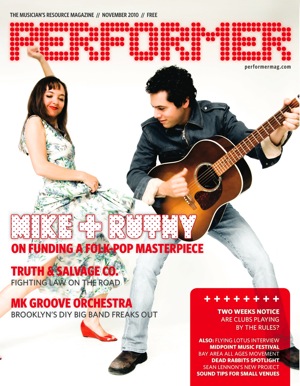
Jolie O’Dell | Download this issue of Performer Magazine
Technology reporter Jolie O’Dell established herself as an industry expert with her work in publications like Mashable and ReadWriteWeb. She currently writes for VentureBeat and serves as a panel moderator for the SF MusicTech Summit, an annual conference bringing together technologists and music enthusiasts in San Francisco. In this interview, she shares her thoughts on how independent musicians can best leverage technology.
What are some of your favorite apps/services for musicians?
I like tools like Moontoast Impulse, which helps you embed and sell your album on Facebook. I like tools like StageIt, which allows musicians to create webcam concerts so they can promote them to fans and make a little money on the side. Then there are monitoring tools that are really great like Next BigSound. It’s an amazing and really simple interface for bands to understand what effect they have on the Internet. I don’t know if you’ve checked out the other social media analytics tools, but they’re so big and complicated. Next Big Sound is the closest you’re going to get to a simple, color-coded, push-this-button-find-out-where-you’re-most-popular thing for bands to use.
How can bands create brand awareness online?
Continue reading “PERFORMER MAGAZINE – Exploring the Future of Music Tech with Jolie O’Dell”




